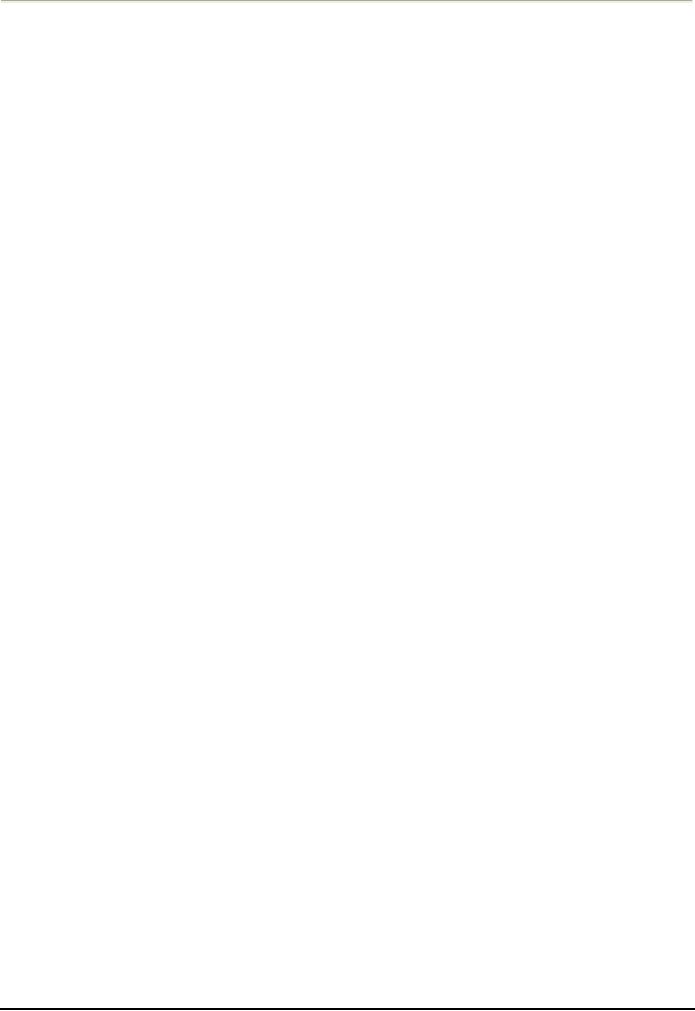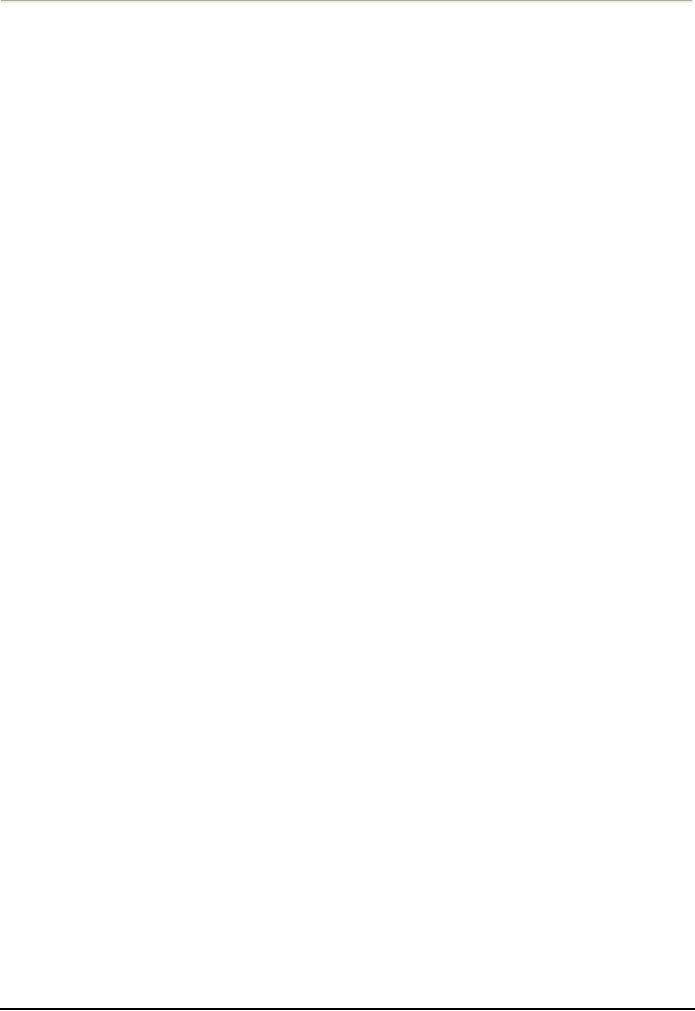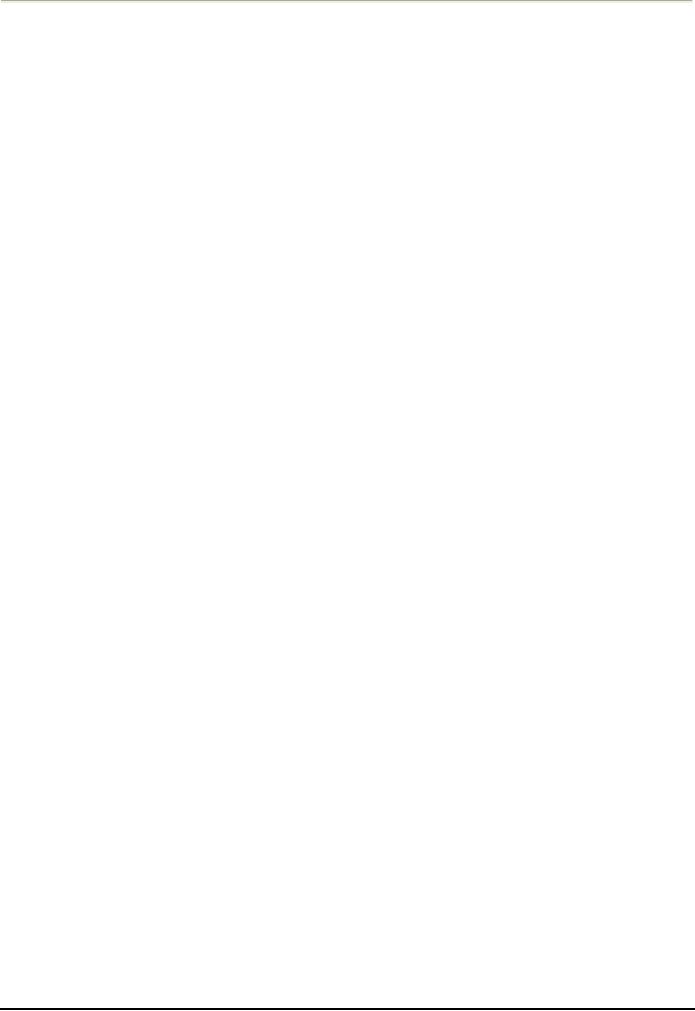 |

Organizational
Psychology (PSY510)
VU
LESSON
08
ORGANIZATIONAL
CULTURE
As
national culture affects human
psychology, so does organizational culture i.e. it is
the belief, systems,
values,
and the behaviors of people in
organizations.
The
term organizational culture refers to the basic
assumptions and beliefs
shared by members of an
organization.
These beliefs operate
unconsciously and "taken for
granted".
The
key elements of organizational culture
are:
·
Observed
behavioral regularities when people
interact, such as the language used
and the ritual surrounding
deference
and demeanor.
·
The
norms
that
evolve in working groups, such as the
norm of a fair day's work
for a fair day's
pay.
·
The
dominant
values espoused
by an organization, such a product
quality or low
prices.
·
The
philosophy
that
guides an organization's policy toward
employees and
customers.
·
The
rules
of the game for
getting along in the organization--"the ropes"
that a newcomer must learn
to
become
an accepted member.
·
The
feeling
or climate that
is conveyed in an organization by the physical
layout and the way in
which
member
of the organization interact with one
another, customers, and
outsiders.
Firms
that make cultural adjustments to
keep up with environmental
changes are likely to
outperform those
whose
culture is rigid and unresponsive to
external jolts. IBM's bureaucratic
culture--with its emphasis
on
hierarchy,
centralization of decisions, permanent employment,
and strict promotion played a
large role in its
difficulties
earlier in the 1990s. In contrast,
Hewlett-Packard, named one of the
best-managed new
companies
more than a decade ago,
retained its strong position
through the 2000s. Many
attribute Hewlett
Packard's
continued success to the fact
that the corporation divided
into smaller sections in the
mid-1980s,
making
it more nimble and able to
bring new products to market
quickly.
Basically,
organizational culture is the personality of the organization. Culture is
comprised of the
assumptions,
values, norms and tangible
signs (artifacts) of organization members
and their behaviors.
Members
of an organization soon come to sense the
particular culture of an organization. Culture is one
of
those
terms that's difficult to
express distinctly, but
everyone knows it when they sense
it. For example, the
culture
of a large, for-profit corporation is
quite different than that of
a hospital which is quite different
that
that
of a university. You can
tell the culture of an organization by looking at the
arrangement of furniture,
what
they brag about, what members wear,
etc. -- similar to what you
can use to get a feeling
about
someone's
personality.
Corporate
culture can be looked at as a system.
Inputs include feedback from,
e.g., society,
professions,
laws,
stories, heroes, values on
competition or service, etc.
The process is based on our
assumptions, values
and
norms, e.g., our values on
money, time, facilities, space and people.
Outputs or effects of our
culture
are,
e.g., organizational behaviors,
technologies, strategies, image,
products, services, appearance,
etc.
The
concept of culture is particularly important when
attempting to manage organization-wide
change.
Practitioners
are coming to realize that, despite the
best-laid plans, organizational change
must include not
only
changing structures and
processes, but also changing
the corporate culture as well.
There's
been a great deal of literature
generated over the past
decade about the concept of
organizational
culture
-- particularly in regard to learning how to
change organizational culture. Organizational
change
efforts
are rumoured to fail the vast
majority of the time. Usually, this failure is
credited to lack of
understanding
about the strong role of culture and the
role it plays in organizations.
That's one of the
reasons
that many strategic planners
now place as much emphasis
on identifying strategic values as they
do
mission
and vision.
Types
of Culture
There
are different types of culture
just like there are
different types of personality.
Researcher Jeffrey
Sonnenfeld
identified the following four
types of cultures.
Academy
Culture
Employees
are highly skilled and tend
to stay in the organization, while
working their way up the
ranks. The
organization
provides a stable environment in which
employees can develop and
exercise their
skills.
Examples
are universities, hospitals,
large corporations, etc.
30

Organizational
Psychology (PSY510)
VU
Baseball
Team Culture
Employees
are "free agents" who
have highly prized skills. They
are in high demand and
can rather easily
get
jobs elsewhere. This type of culture
exists in fast-paced, high-risk
organizations, such as investment
banking,
advertising, etc.
Club
Culture
The
most important requirement for
employees in this culture is to fit into
the group. Usually employees
start
at the bottom and stay with
the organization. The organization promotes
from within and
highly
values
seniority. Examples are the
military, some law firms,
etc.
Fortress
Culture
Employees
don't know if they'll be
laid off or not. These
organizations often undergo
massive
reorganization.
There are many opportunities
for those with timely,
specialized skills. Examples
are savings
and
loans, large car companies,
etc.
Strong/Weak
Cultures
Simply
put, when the staff responds to stimuli
because of their alignment to organizational
values, it is said
to
be a strong culture.
On
the other hand, where there
is little alignment with organizational
values and control must be
exercised
through
extensive procedures and
bureaucracy, the culture is said to be
weak.
Where
culture is strong--people do things because they
believe it is the right thing to
do--there is a risk of
another
phenomenon, Groupthink. Groupthink
was
described by Irving L. Janis. He
defined it as "...a
quick
and easy way to refer to a
mode of thinking that people
engage when they are deeply
involved in a
cohesive
in-group, when members' strivings for
unanimity override their
motivation to realistically
appraise
alternatives
of action." This is a state
where people, even if they
have different ideas, do not
challenge
organizational
thinking, and therefore there is a
reduced capacity for
innovative thoughts. This could
occur,
for
example, where there is
heavy reliance on a central
charismatic figure in the organization, or
where there
is
an evangelical belief in the organization's
values, or also in groups
where a friendly climate is at the
base
of
their identity (avoidance of
conflict). In fact groupthink is very
common, it happens all the time,
in
almost
every group. Members that
are defiant are often
turned down or seen as a
negative influence by the
rest
of the group, because they bring conflict
(conflicting ideas) and
disturb the central culture. In
cultural
studies,
culture is seen as ethnocentric (Barone,
J.T, Switzer, J.Y), or culturo-centric,
meaning that we tend
to
think that our
culture/subculture is the best. The
stronger the culture, the greater the
risks of groupthink.
By
contrast, bureaucratic organizations
may miss opportunities for
innovation, through reliance
on
established
procedures. Innovative organizations
need individuals who are
prepared to challenge the
status
quo--be
it groupthink or bureaucracy, and
also need procedures to implement
new ideas
effectively.
Creating
Culture
Organizational
culture can be created by means of
concerted efforts on part of the founders
of the
organization.
Although the organizational culture can be developed
in a number of ways, the common
steps
involved
in creating an organizational culture are as
follows:
·
A
person has an idea for a
new enterprise. The person
is usually the founder of the organization.
He
develops
certain rules, norms and
regulation informally and comes up
with the basic theme of
the
culture.
·
In the
second step, the conceiver
collects key people whom he
deems suitable to implement his or
her
ideas
by converting them into organizational
rules, norms and
procedures.
·
The
key people and the conceiver
work together to get things of the ground
and develop them into
laid
down
rules and
regulations.
·
Finally
the organization takes its shape
and other members are
incorporated into the organization.
·
A culture
emerges based on the conceptions of the
founder. The culture is then molded by
the activities
within
the organization.
Maintaining
Culture
Once
the organizational culture is established, the organization
adopts some measure to
ensure that the
culture
is maintained and its core
values accepted and adopted by the
employees. This is done through
the
following
steps of socialization:
·
Selection/rejection
31

Organizational
Psychology (PSY510)
VU
This
is the first step which
ensures the persistence of the culture. At the
entry level, i.e. hiring
and
recruitment,
employees are selected based
on their ability to adhere to the
culture.
·
Placement
in a job
After
the selection of the fit person
for the organization, the new recruit is
made to perform
certain
tasks
in the organization that may acquaint
him with the culture. In other
words, it is a process of
giving
hands
on experience to the new
employee.
·
Job
Mastery
One
the selection and employment procedures
are over, the employee is
subject to training and
gains
experience
at the job. Ultimately he or she
becomes an expert in not just the job
but also becomes the
carrier
of the organizational culture.
·
Measuring
and rewarding performance
The
performance of the employee is measured
using suitable techniques
and he or she is rewarded
as
deemed
right.
·
Adherence
to important values
This
refers to the employee's commitment to
sacrifice his or her own
interests for the organization. He
or
she would then show
full commitment towards the organization
and its values.
·
Reinforcing
stories and folklore
In
this step, organizational stories and
folklore is related in a manner
that it presents the culture to
the
employees
as the basic and the core
distinction and competitive
advantage for the organization.
·
Recognition
and promotion
Finally
deserving individuals are
recognized and promoted
within the organization.
REFERENCES
·
Mejia,
Gomez. Balkin, David &
Cardy, Rober. (2006). Managing
Human Resources (Fourth
Edition). India:
Dorling
Kidersley Pvt. Ltd., licensee of
Pearson Education in South
Asia.
·
Seven
Ways to Enhance Organizational Culture, by
Kevin Eikenberry. Retrieved
from:
http://ezinearticles.com/?Seven-Ways-to-Enhance-Organizational-Culture&id=164376
·
Creating
Strong Organizational Culture. Retrieved
from:
http://www.csupomona.edu/~wcweber/301/301slide/ch09301/sld019.htm
·
The
role of the founder in creating
organizational culture. Organizational Dynamics,
12(1), 13-28.
Schein,
E. H. (1990). Retrieved from:
http://www.iew3.technion.ac.il/Home/Users/anatr/symbol.html
·
Leading
Questions: How to create an
organizational culture. Asheville Citizen-Times,
Retrieved from:
http://www.edbrenegar.typepad.com/leading_questions/2005/02/how_to_create_a.html
FURTHER
READING
·
'Corporate
/ Organizational Culture' Effect Culture Change
and Create a Positive
Organizational
Culture
With Ideas From Our TGIM
Newsletter Effect Culture:
www.communicationideas.com/corporate-culture.html
·
Organizational
Culture and the Necessity of its
Influence. Europian and
Japaness organizational culture.
http://www.my.csb.ge/e/htm/research/publication/intas/Shalva%20Machavariani%20-
%20%20Organizational%20Culture.pdf
-
·
Creating
culture in your organization.
http://www.ncbi.nlm.nih.gov/entrez/query.fcgi?cmd=Retrieve&db=PubMed&list_uids=12602061&d
opt=Abstract
32
Table of Contents:
- INTRODUCTION TO ORGANIZATIONAL PSYCHLOGY:Hawthorne Effect
- METHODOLOGIES OF DATA COLLECTION:Observational method, Stability of Measures
- GLOBALIZATION:Aspects of Globalization, Industrial Globalization
- DEFINING THE CULTURE:Key Components of Culture, Individualism
- WHAT IS DIVERSITY?:Recruitment and Retention, Organizational approaches
- ETHICS:Sexual Harassment, Pay and Promotion Discrimination, Employee Privacy
- NATURE OF ORGANIZATIONS:Flat Organization, Neoclassical Organization Theory
- ORGANIZATIONAL CULTURE:Academy Culture, Baseball Team Culture, Fortress Culture
- CHANGING ORGANIZATIONAL CULTURE:Move decisively, defuse resistance
- REWARD SYSTEMS: PAY, Methods of Pay, Individual incentive plan, New Pay Techniques
- REWARD SYSTEMS: RECOGNITION AND BENEFITS, Efficiency Wage Theory
- PERCEPTION:How They Work Together, Gestalt Laws of Grouping, Closure
- PERCEPTUAL DEFENCE:Cognitive Dissonance Theory, Stereotyping
- ATTRIBUTION:Locus of Control, Fundamental Attribution Error
- IMPRESSION MANAGEMENT:Impression Construction, Self-focused IM
- PERSONALITY:Classifying Personality Theories, Humanistic/Existential
- PERSONALITY ASSESSMENT:Standardized, Basic Categories of Measures
- ATTITUDE:Emotional, Informational, Behavioural,Positive and Negative Affectivity
- JOB SATISFACTION:The work, Pay, Measurement of Job Satisfaction
- MOTIVATION:Extrinsic motive, Theories of work motivation, Safety needs
- THEORIES OF MOTIVATION:Instrumentality, Stacy Adams’S Equity theory
- MOTIVATION ACROSS CULTURES:Meaning of Work, Role of Religion
- POSITIVE PSYCHOLOGY:Criticisms of ‘Traditional’ Psychology, Optimism
- HOPE:Personality, Our goals, Satisfaction with important domains, Negative affect
- EMOTIONAL INTELLIGENCE:EI IS Related To Emotions and Intelligence
- SELF EFFICACY:Motivation, Perseverance, Thoughts, Sources of Self-Efficacy
- COMMUNICATION:Historical Background, Informal-Formal, Interpersonal Communication
- COMMUNICATION (Part II):Downward Communication, Stereotyping Problems
- DECISION MAKING:History, Personal Rationality, Social Model, Conceptual
- PARTICIPATIVE DECISION MAKING TECHNIQUES:Expertise, Thinking skills
- JOB STRESS:Distress and Eustress, Burnout, General Adaptation Syndrome
- INDIVIDUAL STRESSORS:Role Ambiguity/ Role Conflict, Personal Control
- EFFECTS OF STRESS:Physical Effects, Behavioural Effects, Individual Strategies
- POWER AND POLITICS:Coercive Power, Legitimate Power, Referent Power
- POLITICS:Sources of Politics in Organizations, Final Word about Power
- GROUPS AND TEAMS:Why Groups Are Formed, Forming, Storming
- DYSFUNCTIONS OF GROUPS:Norm Violation, Group Think, Risky Shift
- JOB DESIGN:Job Rotation, Job Enlargement, Job Enrichment, Skill Variety
- JOB DESIGN:Engagement, Disengagement, Social Information Processing, Motivation
- LEARNING:Motor Learning, Verbal Learning, Behaviouristic Theories, Acquisition
- OBMOD:Applications of OBMOD, Correcting Group Dysfunctions
- LEADERSHIP PROCESS:Managers versus Leaders, Defining Leadership
- MODERN THEORIES OF LEADERSHIP PROCESS:Transformational Leaders
- GREAT LEADERS: STYLES, ACTIVITIES AND SKILLS:Globalization and Leadership
- GREAT LEADERS: STYLES, ACTIVITIES AND SKILLS:Planning, Staffing